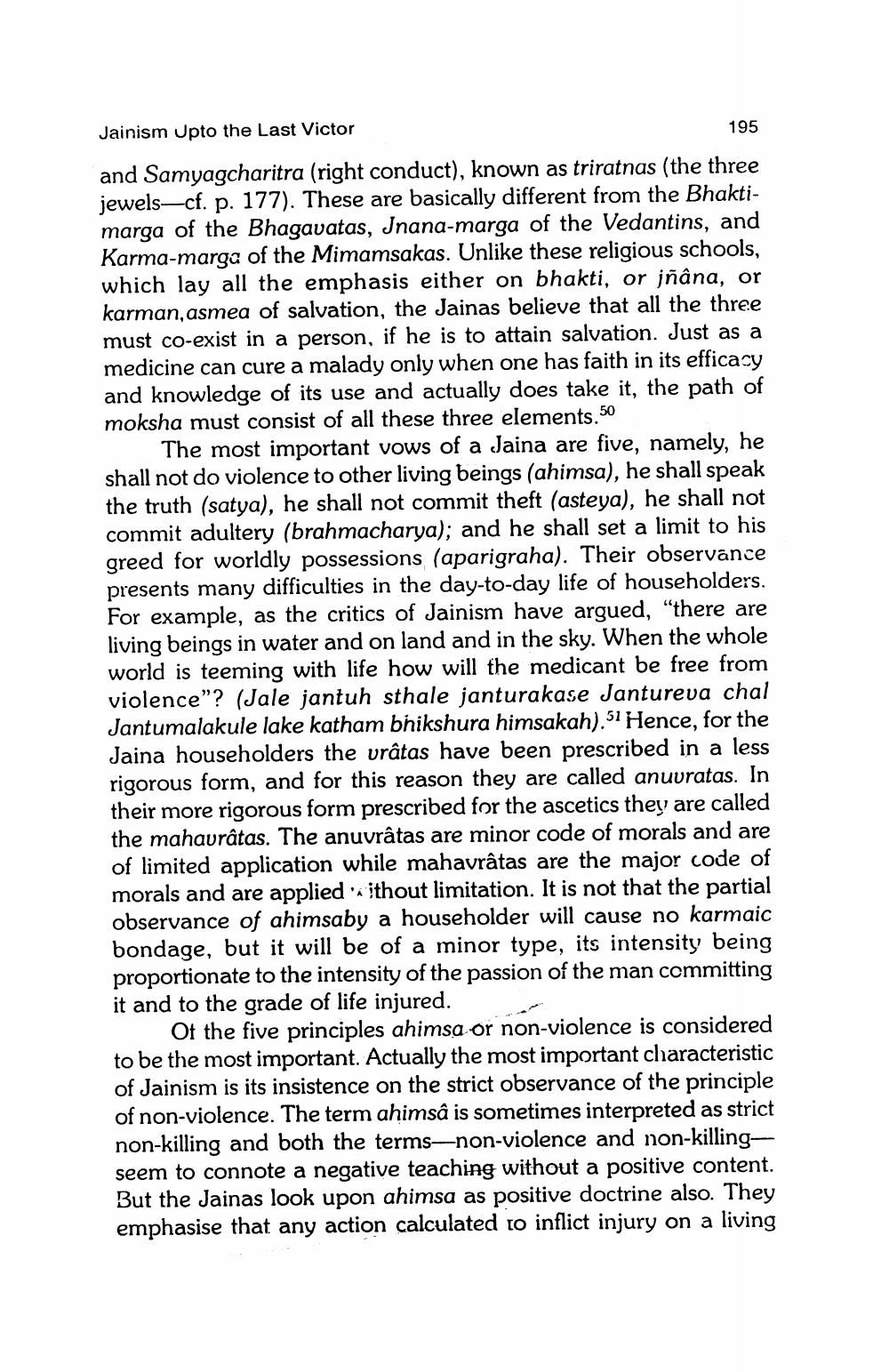________________
Jainism Upto the Last Victor
195
and Samyagcharitra (right conduct), known as triratnas (the three jewels-cf. p. 177). These are basically different from the Bhaktimarga of the Bhagavatas, Jnana-marga of the Vedantins, and Karma-marga of the Mimamsakas. Unlike these religious schools, which lay all the emphasis either on bhakti, or jñâna, or karman, asmea of salvation, the Jainas believe that all the three must co-exist in a person, if he is to attain salvation. Just as a medicine can cure a malady only when one has faith in its efficacy and knowledge of its use and actually does take it, the path of moksha must consist of all these three elements.50
The most important vows of a Jaina are five, namely, he shall not do violence to other living beings (ahimsa), he shall speak the truth (satya), he shall not commit theft (asteya), he shall not commit adultery (brahmacharya); and he shall set a limit to his greed for worldly possessions (aparigraha). Their observance presents many difficulties in the day-to-day life of householders. For example, as the critics of Jainism have argued, "there are living beings in water and on land and in the sky. When the whole world is teeming with life how will the medicant be free from violence"? (Jale jantuh sthale janturakase Jantureva chal Jantumalakule lake katham bhikshura himsakah).51 Hence, for the Jaina householders the urâtas have been prescribed in a less rigorous form, and for this reason they are called anuvratas. In their more rigorous form prescribed for the ascetics they are called the mahaurâtas. The anuvrâtas are minor code of morals and are of limited application while mahavrâtas are the major code of morals and are applied ithout limitation. It is not that the partial observance of ahimsaby a householder will cause no karmaic bondage, but it will be of a minor type, its intensity being proportionate to the intensity of the passion of the man committing it and to the grade of life injured.
Of the five principles ahimsa or non-violence is considered to be the most important. Actually the most important characteristic of Jainism is its insistence on the strict observance of the principle of non-violence. The term ahimsâ is sometimes interpreted as strict non-killing and both the terms-non-violence and non-killingseem to connote a negative teaching without a positive content. But the Jainas look upon ahimsa as positive doctrine also. They emphasise that any action calculated to inflict injury on a living




